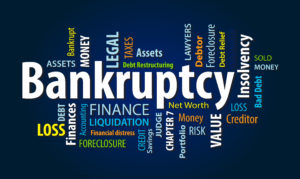 Actions to avoid preferential transfers under Bankruptcy Code 547(b) are subject to certain defenses and limitations, including the ‘new value’ defense of Section 547(c)(4) which provides as follows:
Actions to avoid preferential transfers under Bankruptcy Code 547(b) are subject to certain defenses and limitations, including the ‘new value’ defense of Section 547(c)(4) which provides as follows:
The trustee may not avoid under this section a transfer – to or for the benefit of a creditor, to the extent that, after such transfer, such creditor gave new value to or for the benefit of the debtor –
(A) not secured by an otherwise unavoidable security interest; and
(B) on account of which new value the debtor did not make an otherwise unavoidable transfer to or for the benefit of such creditor.
There now exist two distinct viewpoints on how to interpret whether Section 547(c)(4)(B) requires that the subsequent advances to “remain unpaid”.
In In re New York City Shoes, Inc., 880 F.2d 679 (3d Cir. 1989) and In re Ford, 98 B.R. 669, 681 (Bankr. D.Vt. 1989), ruled that if the new value is subsequently repaid, then the underlying basis for the new value exception no longer exists. Both courts reasoned that new value in effect returns a preferential payment to the creditor back to the debtor. Money that flows out of the debtor, in the form of a preferential payment, flows back into the debtor in the form of a subsequent advance of new value. A creditor who received a preference but, in effect, paid it back, should not be penalized for what was initially a preferential payment. See, In re Braniff Inc., 154 B.R. 773, 782-87 (Bankr. N.D.Fla. 1993) (a creditor could not assert a subsequent new value defense because the creditor had gotten paid for the new value, even though the payment received by the creditor was itself avoidable).
In re Calumet Photographic, Inc., 594 B.R. 879 (Bankr. N.D.Ill. 2019), followed this viewpoint based on its interpretation of prior Seventh Circuit decisions. For example, the court noted that in In re Prescott, 805 F.2d 719 (7th Cir. 1986), the Seventh Circuit, citing to In re Saco Local Development Corp., 30 B.R. 859 (Bankr. D.Me. 1983), explained that:
Section 547(c)(4) establishes a subsequent advance rule whereby a preferential transfer is insulated from a trustee’s avoiding powers to the extent that a creditor extends new value, which is unsecured and remains unpaid, to a debtor after the preferential transfer.
Prescott, 805 F.2d at 728. Calumet Photographic noted this position was repeated in In re OneStar Long Distance, Inc., 872 F.3d 526, 530 (7th Cir. 2017), wherein the circuit court, in discussing the standard for excepting preferential transfers from avoidance under Section 547(c)(4)(B), explained: “[i]f the debtor pays for the creditor’s new value (and that payment isn’t itself avoidable), then the new value is canceled out. That leaves only the preferential payment that §547 is designed to address in the first place.” The Seventh Circuit then went on to state:
Accordingly, the Code disallows the new-value defense when ‘on account of the new value, the debtor responds with ‘otherwise unavoidable transfer to or for the benefit of [the] creditor.’ That is, the new value must remain unpaid in order to reduce the creditor’s preference liability. (emphasis supplied).
Id.
The alternative view was made in In re Liberty Live Stock Co., 198 B.R. 365 (Bankr.D.Kan.1996), which held that the “remains unpaid” requirement was explicit in Section 60(c) of the Bankruptcy Act of 1898, the predecessor to Section 547(c)(4). However, the court noted that Section 547(c)(4) does not explicitly require that the new value advanced remain unpaid. This element of the defense, according to Liberty Live Stock, was actually eliminated.
Liberty Live Stock further noted that none of the cases following the first viewpoint addressed the applicability of the subsequent new value exception to a situation where the debtor continually makes payments on antecedent debt pre-petition, the creditor continually advances new value on the strength of the debtor’s payments, and the new value advances are in turn repaid with more transfers that serve as a basis value of still more advances. The court stated that the language of Section 547(c)(4) requires a particular sequence of events. First, there is an avoidable preferential payment. Next, there is new value advanced, on account of which the debtor did not make an otherwise unavoidable transfer. Thus, if the debtor paid for the new value with an avoidable transfer, the creditor is protected by the defense. While some transfers become unavoidable when followed by another new advance, they are not “otherwise unavoidable,” as non-preferential transfers or preferential transfers accepted from recovery under other subsections of Section 547(c). See also, Matter of Toyota of Jefferson, Inc., 14 F.3d 1088 (5th Cir. 1994) (transfers avoided as preferences can be applied as new value under Section 547(c)(4)); In re Maxwell Newspapers, Inc., 192 B.R. 633 (Bankr. S.D.N.Y. 1996) (a transfer which is avoided as a preference can thereafter be used as new value for prior avoidable preferential transfers); In re Jones Truck Lines, Inc., 130 F. 3d 323 (8th Cir. 1997) (quoting from Maxwell Newspapers, stated “there is no logical reason to distinguish between a creditor that was paid by an avoidable transfer and one that was never paid at all.”)
The Eleventh Circuit in In re BFW Liquidation, LLC, 899 F.3d 1178 (11th Cir. 2018), followed this line of reasoning, disagreeing with dictum to the contrary in Charisma Investment Company, N.V. v. Airport Systems, Inc. (In re Jet Florida Systems, Inc.), 841 F.2d 1082 (11th Cir. 1988). Here, the court stated that nothing in the language of Section 547(c)(4) indicated that an offset to a creditor’s 547(b) preference liability is available only for new value that remains unpaid. The court noted that instead, the “language of the statute requires only that (1) any new value given by the creditor must not be secured by an otherwise unavoidable security interest and (2) the debtor must not have made an otherwise unavoidable transfer to or for the benefit of the creditor on account of the new value.”
By its plain terms, then, the statute only excludes “paid” new value that is paid for with “an otherwise unavoidable transfer.” Therefore, so long as the transfer that pays for the new value is itself avoidable, that transfer is not a barrier to assertion of §547(c)(4)’s subsequent-new-value defense.
Id. at 1189.
In In re JKJ Chevrolet, Inc., 412 F.3d 545 (4th Cir. 2005), this argument was taken a step further. In this JKJ Chevrolet, the preference defendant raised a new value defense with transfers that had been repaid by the debtor, and which payments were not the target of a preference action. The circuit court held that those transfers did provide a new value defense, noting that the trustee’s failure to avoid the post-new value payments to the creditor did not convert those payments from avoidable to unavoidable transfers. Indeed, the plain and ordinary meaning of an “avoidable” transfer is a transfer “that can be avoided.” The court went on to state:
Because the trustee could have avoided the transfers, those transfers were not “otherwise unavoidable,” and thus have no bearing on Chrysler Credit’s new value defense. And, even though such a result may frustrate the intended operation of section 547(c)(4), such is only the case because of the trustee’s failure to recover the avoidable post-new value payments.
Id. at 552.
Matthew T. Gensburg
[email protected]

